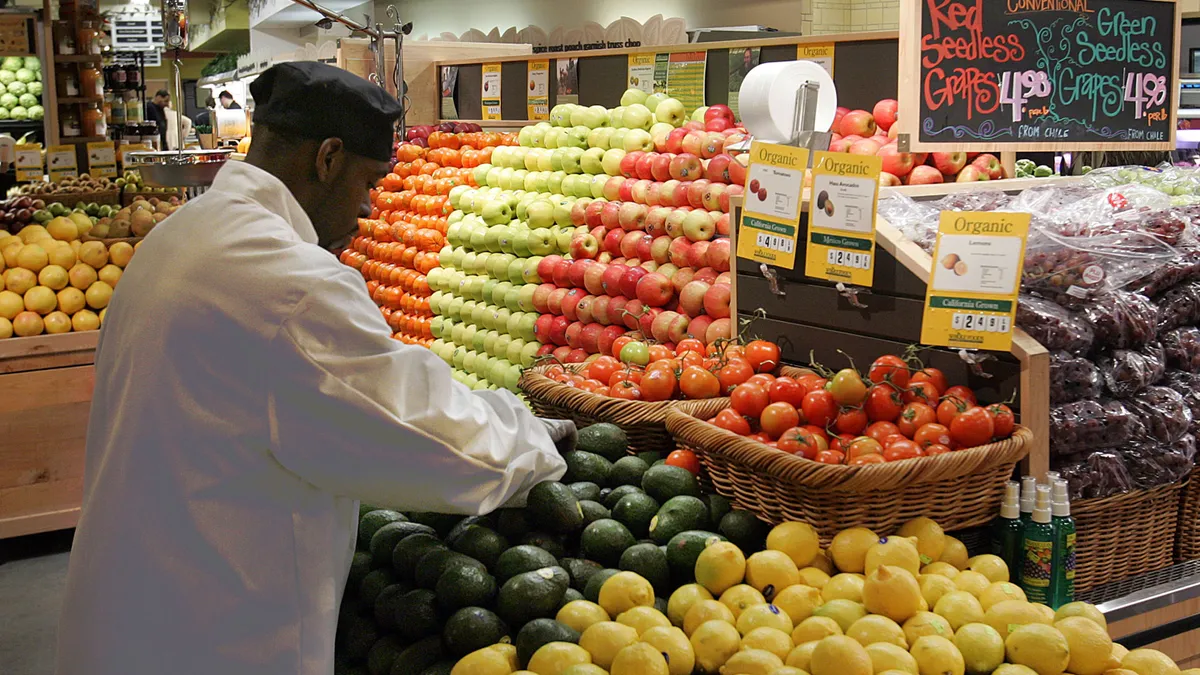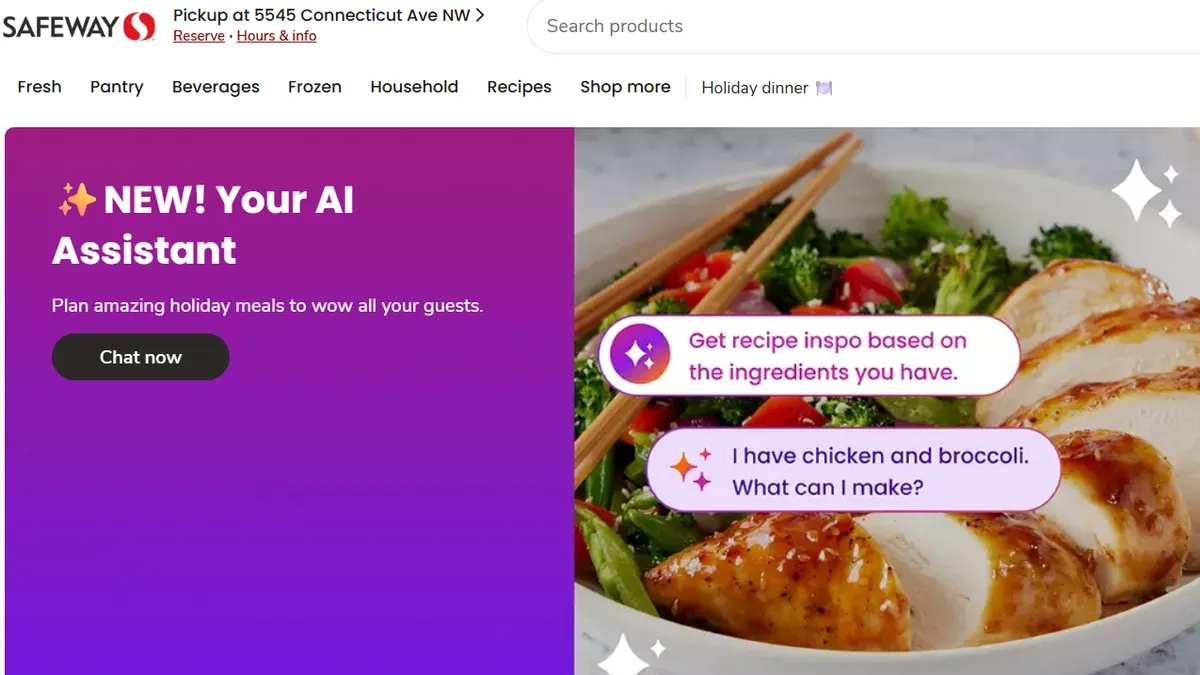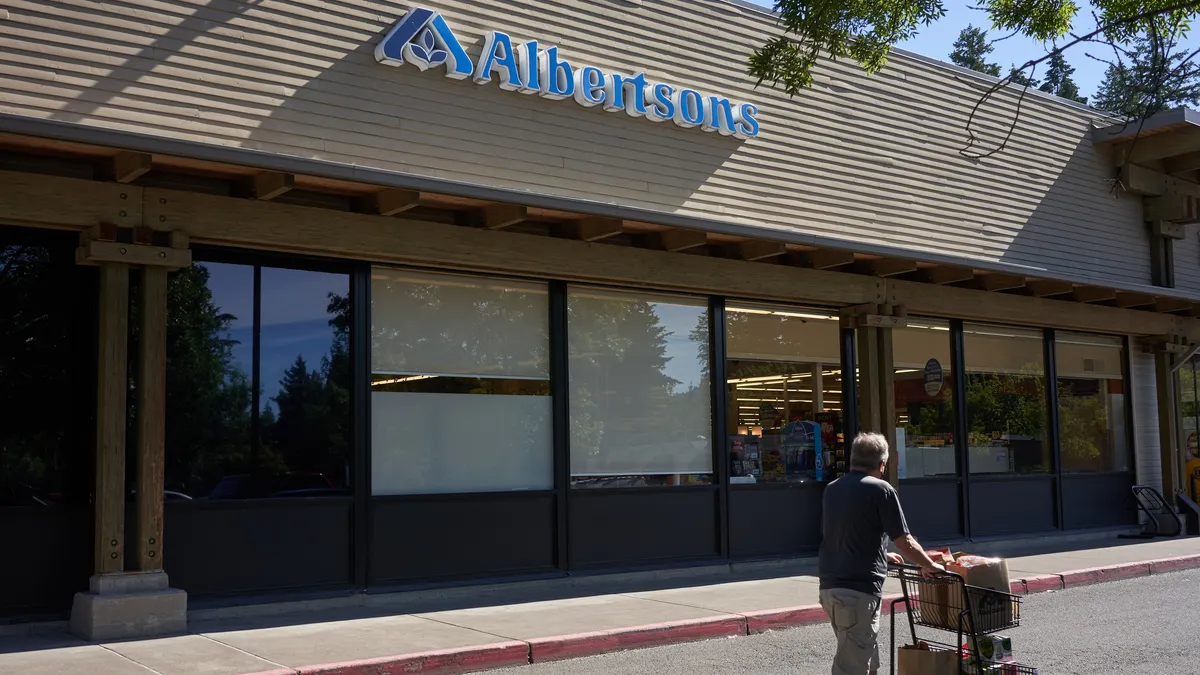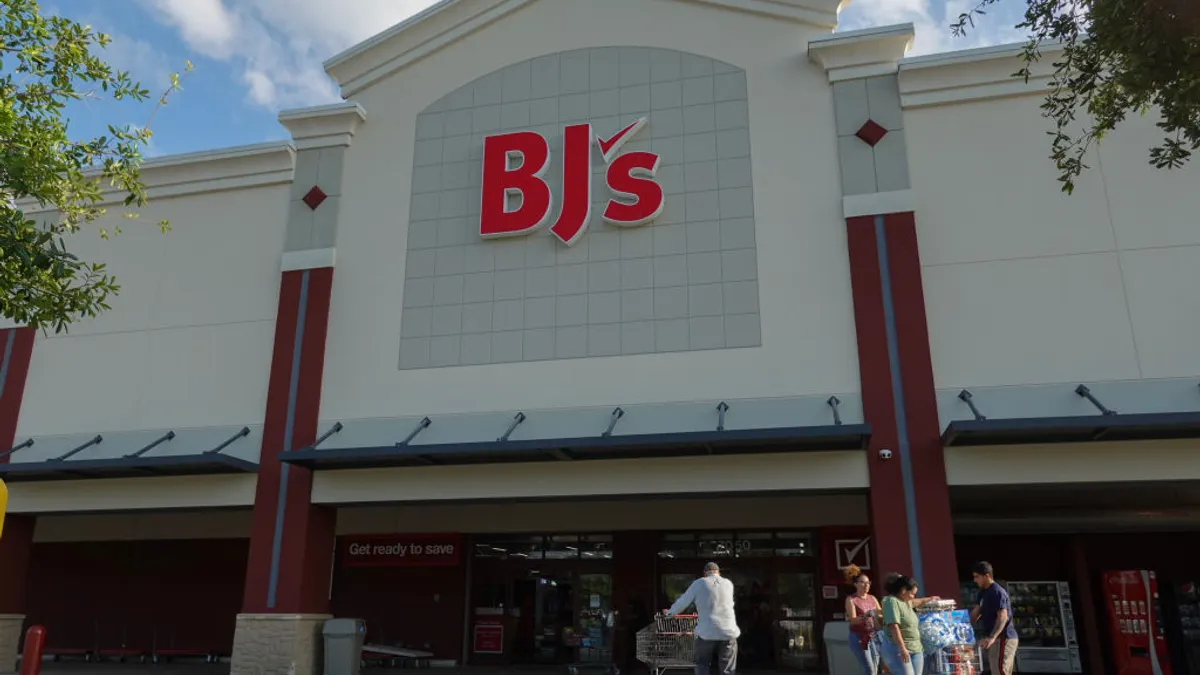Grocers have two choices: They can choose to be experiential or they can choose to be convenient, but they can’t choose to be both. The ones that do, often fail, Alec Gefrides, director of the transactional retail segment at Intel, told Grocery Dive.
Ahold Delhaize chose the convenient route when its Retail Business Services (RBS) arm partnered with UST Global and Intel's CloudPick to bring frictionless store technology to its campus. In November, Ahold Delhaize debuted the store — known as "Lunchbox" — in the newly remodeled cafeteria of its RBS office in Quincy, Massachusetts. The 150-square-foot location took around seven weeks to install, Kenneth Bolick, senior director of innovation and enterprise mobility at RBS, told Grocery Dive.
Just a month later, the company opened another location in Pennsylvania in Giant-Martin’s perishable distribution center, he said. Eventually, Ahold Delhaize expects to open these frictionless stores in offices, college campuses and airports.
“We were looking at a model where we can accelerate and open a store that could go where traditionally grocery retail doesn't fit," Bolick added. "So how can we extend ourselves [to] places we can’t reach now?"
Retailers can choose how they want to use the store. They just have to provide the space and products to go in it, and UST Global and Intel will come in and install the store, Bolick said. In return for providing the software and hardware, the tech companies receive a share of the revenue the store generates.
A look inside the store
To enter the frictionless checkout store, shoppers must use a special phone app, accessed via a four-digit pin. Once they successfully log in, a QR code appears on the screen which they can scan by placing their phones face down on a sensor positioned outside the store. If shoppers have children or multiple people in their party, they can all enter at once.
Once inside the store, customers can shop as they normally would by pulling items off of the shelf. They can find an assortment of drinks, snacks and fresh foods, with options for special diets like gluten-free and plant-based. Once they’ve gathered their items, they just walk out and receive a receipt within about 15 seconds.
“That’s one of the biggest complaints is not getting the receipt quickly enough," said Gefrides. "They don’t want to pay for what they don’t have."
The number of people that can be in the store varies depending on the size. Ahold Delhaize's Massachusetts location can fit up to 12 people at one time. The aisles are large enough for multiple people to walk comfortably and each shelf unit is arranged by similar products. Breakfast and bakery items in the middle, snacks on the back end and perishables and beverages in the refrigerated section.
What's behind the technology
There’s more than meets the eye to make this technology work. Behind the scenes, cameras and sensors placed all around the store and on every shelf work hand-in-hand to pinpoint each person in the store and connect them to the account they walked in with.
“It knows your overhead perspective so that you have the privacy of no facial recognition, and once it knows your dot moving around the store follows you and never lets the top of your head go," Bolick explained.
As each person picks up products and places them back, the item’s cost is added and then removed from their receipt. If they hand a product to someone else, the camera recognizes the product and who the exchange was made with. If customers pick up a product and place it back in the wrong spot, the weight sensors will recognize which product was placed there.
“So that if somebody else came in and said, 'Oh, I really wanted that' and picked it up, it will charge them correctly,” said Bolick.
Store associates are still on hand to help with any major issues. In addition, they restock shelves and help ensure pricing accuracy.
“It’s no different than running any convenience store shop," said Bolick. "It's not as if the magic robot comes in and stops the store and makes it all work. So the folks that need to bring it to life, bring it to life.”
But the motion sensors make it a lot easier for them. In conjunction with the cameras, they recognize how many products were purchased from the shelf and how many replacements need to be ordered.
The NRF show floor was filled with frictionless shopping tools and sensors aimed at streamlining shopping and helping retailers better track inventory. Since the launch of Amazon Go, tech companies and retailers have been scoping out ways to compete with the "just walk out" technology and offer a better front-end experience for customers.
“Combining cameras and sensors allows us to achieve the accuracy we've shown here,” Bolick added.

















